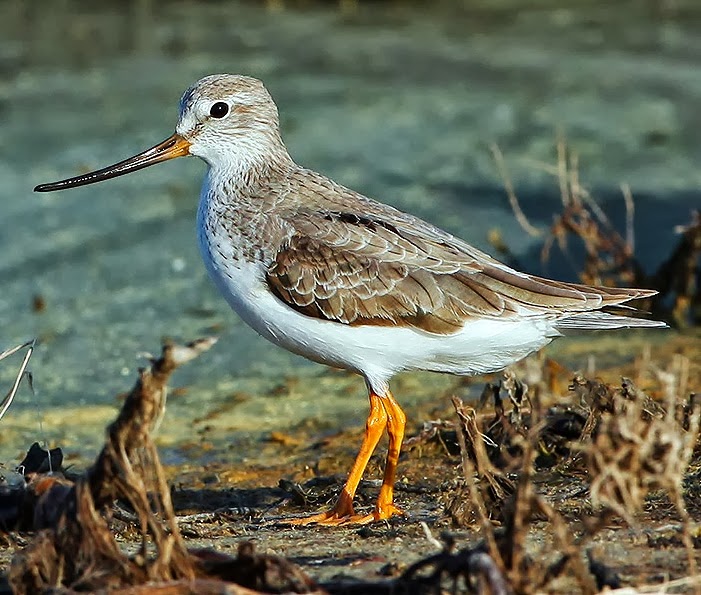 |
| Photo by Christodoulos Makris (Trek Nature) |
Common name:
Terek sandpiper (en); maçarico-sovela (pt); chevalier bargette (fr); andarríos del Terek (es); Terekwasserläufer (de)
Taxonomy:
Order Charadriiformes
Family Scolopacidae
Range:
This species breeds from Finland to north-eastern Siberia, as far east as the Kolyma river. They migrate south to winter along the coasts of eastern Africa, southern Asia and Australia.
Size:
These birds are 22-25 cm long and have a wingspan of 45-60 cm. They weigh 70-100 g.
Habitat:
The Terek sandpiper breeds in lowland valleys in northern boreal forests and tundra, especially on floodplains with flooded meadows and marshes, and where overgrown moist grasslands alternate with willow scrubland. They also use the shores of lakes, slow-moving rivers and sheltered seas. Outside the breeding season they are found in estuaries and mudflats, coral reefs, sandy and pebbly beaches, sandbars and mudflats at river mouths, coastal swamps, saltpans, coastal lagoons and saltmarsh creeks.
Diet:
On the breeding areas they feed mainly on adult and larval midges, as well as seeds. Outside the breeding season they feed on various insects, small molluscs, crustaceans, spiders and annelid worms.
Breeding:
Terek sandpipers breed in May-August. They are semi-colonial and each nest consists of a shallow depression in open or short vegetation, close to water, typically lined with grass and debris. There the female lays 2-5 eggs, which he mostly incubates alone for 20-24 days. The chicks leave the nest soon after hatching, being tended by both parents. They start flying about 15 days after hatching.Each pair raises a single brood per season.
Conservation:
IUCN status – LC (Least Concern)
This species has a very large breeding range and the global population is estimated at 160.000-1.200.000 individuals. The overall population trend is stable, although some populations have unknown trends. This species may be negatively affected by habitat loss and degradation in coastal areas of the Yellow Sea, in China and South Korea, where they have an important staging site.







